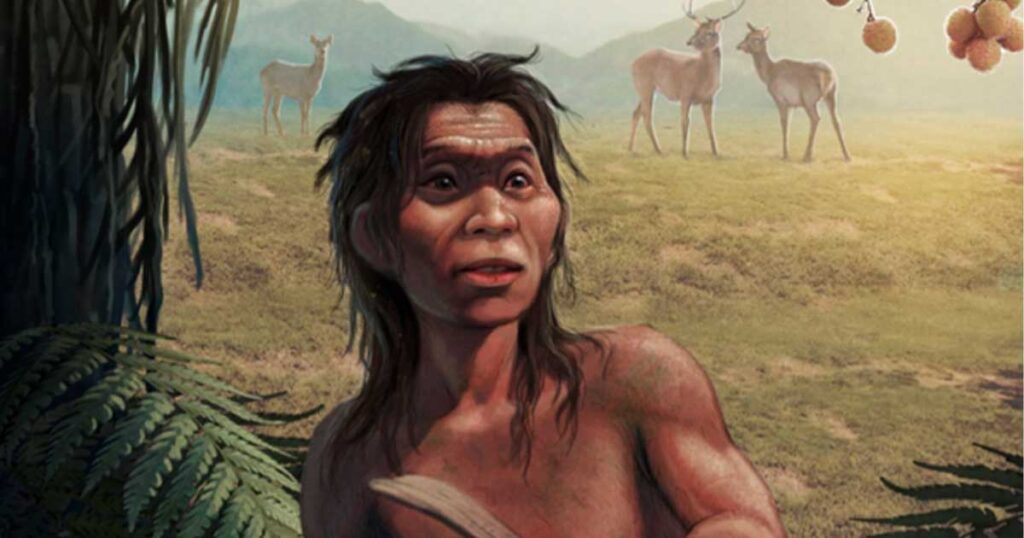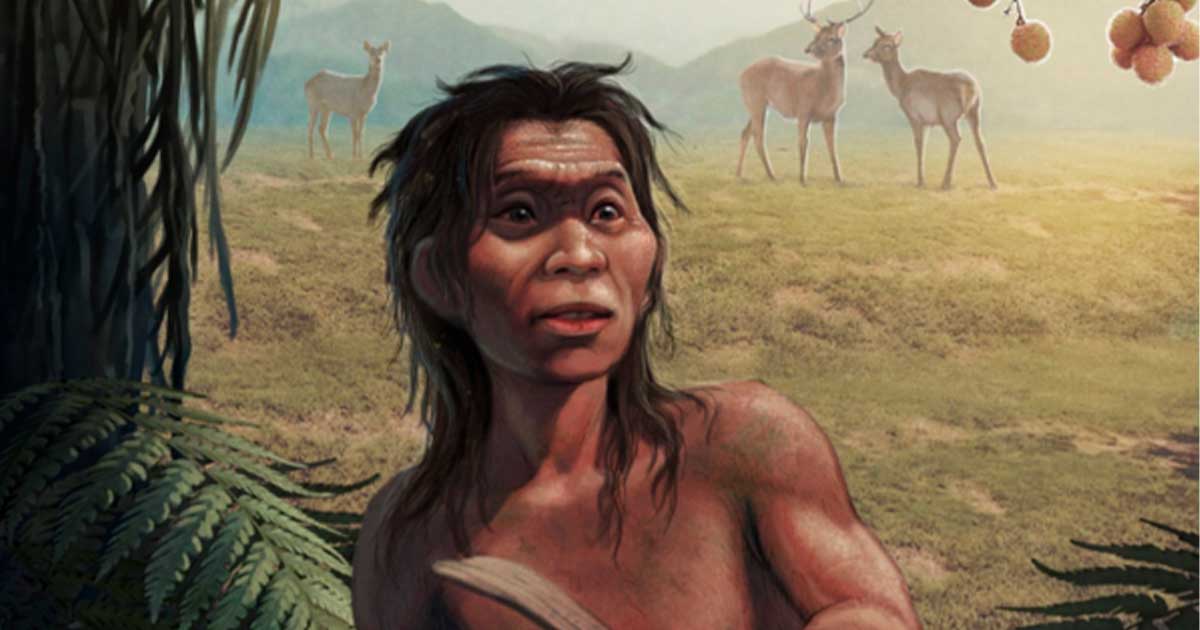

Genome sequencing of a human Late Pleistocene Fossil in southwest China dating back around 14,000 years is helping shed light on the ancestry of the very first Americans. The mystery surrounding the human fossils found in a cave has been resolved in a new study published in Current Biology, which posits that the hominin belonged to an extinct “maternal branch” of modern humans. The study additionally sheds further light on the mysteries of human origins, suggesting this particular branch of modern humans potentially contributed to the origin of Native Americans.

The lateral view of the Pleistocene skull fossil unearthed from Red Dear Cave. Source: Xueping Ji / CC BY-SA
Pleistocene Fossil – A Previously Unknown Human Species?
The cranium belonged to an individual known as Mengzi Ren (MZR) and was unearthed in 1989 from Red Deer Cave, Yunnan province, along with her thigh bone. The origins of the skull have been a subject of intense scrutiny and debate within the scientific community since due to its shape which raised questions as to whether it an archaic human, like a Neanderthal or Denisovan, or a member of the modern human species. The cave also revealed more than 30 other human fossils, and animal fossils of the red deer, macaque, and black bear too.
For a while, the skull was attributed to a hybrid population of archaic and modern humans by human evolution experts due to the fact that the skull shape was closer to that of a Neanderthal, while the brain size appeared to be smaller than a modern human. There were suggestions that this could be a previously unknown and undiscovered human species that co-existed alongside our own named the Red Deer People, after the cave in which they were found. Now, however, it seems that the mystery surrounding this rare Pleistocene fossil has now been solved.
“Combined with published data, we detected a clear genetic stratification in the ancient southern populations of East Asia and Southeast Asia, and some degree of south-versus-north divergency during the Late Pleistocene,” highlighted the paper. “The MZR was identified as a southern East Asian with genetic continuity with present-day populations.” The team used ancient DNA, sequencing a fraction of the total genome – a 100 million DNA bases, which helped enough to establish the individual’s species-level identity.

The excavation site of Maludong (Red Deer Cave), where the Pleistocene fossil was unearthed. (Xueping Ji / CC BY-SA)
Ancient DNA and the Native American Link
The results of the physical anthropological research revealed that the owner of the skull was a young woman, 155 cm (5.08 ft) in height, and weighing 46 kilos (101 lbs). She was a hunter-gatherer, according to Zhang Xiaoming, the paper’s first author, also a research fellow at the Kunming Institute of Zoology under the Chinese Academy of Sciences. According to CNN, radiocarbon dating on the sediments of the fossils from 2008 indicated their age, which coincided with a period in human history when humans had migrated to many different parts of the world already.
“Ancient DNA technique is a really powerful tool,” says Bing Su, a researcher at the Kunming Institute of Zoology at the Chinese Academy of Sciences. “It tells us quite definitively that the Red Deer Cave people were modern humans instead of an archaic species, such as Neanderthals or Denisovans, despite their unusual morphological features. It was a really exciting moment. It is difficult to find ancient DNA in such a sample. After three years of trying to extract DNA from around 100 spots on the cranium, we found ancient DNA that we could sequence.”
The genome of these fossils was compared to those of people from around the world, revealing that the bones belonged to an individual with a link to the East Asian ancestry of Native Americans. This led to the hypothesis that some of these southern East Asian people must have travelled through eastern China and Japan, along the respective coastlines, reaching as far as Siberia.
From here, they crossed the Bering Strait through the Beringia land bridge, due to low ocean levels prior to the mass melting of ice that occurred roughly 11,700 years ago. They would cross over to modern day North America, becoming the first people to arrive in the New World. The surviving decedents are now found in East Asia, the Indo-China peninsula, and the Southeast Asian islands, with their ancestors possessing rich genetic and morphological diversity.
Su explains that additional data will help paint a more complete picture of our migrating ancestors as the team plans to sequence more ancient human DNA from fossils. They plan to center their focus around southern East Asia and look at even older fossils than the Red Deer Cave finds. This will help in understanding human adaptability, such as variations in skin color in response to sunlight exposure. Such conclusions could help explain the visible differences in human beings today.